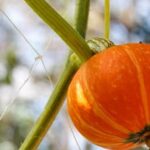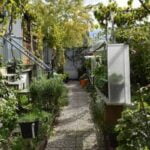Are you looking for ways to improve your vegetable garden while also being environmentally conscious? Many gardeners are turning to natural alternatives like newspaper and mulch to enhance the health and productivity of their crops. In this article, we will explore the benefits of using newspaper and mulch in vegetable gardens, as well as provide practical tips for implementation.
Mulch is a vital component of any successful garden, providing multiple benefits such as moisture retention, weed suppression, and soil insulation. Understanding the different types of mulch available and how to properly utilize them can significantly impact the health and yield of your vegetable plants. Similarly, repurposing newspaper as a form of mulch offers not only weed control but also environmental advantages through recycling.
Using newspaper effectively in a vegetable garden calls for careful consideration of both its application and potential impact on specific plants. By understanding how to use these materials in harmony with each other, you can optimize their benefits while minimizing any potential drawbacks. Join us as we delve into the world of using newspaper and mulch in vegetable gardens and discover how you can elevate your gardening experience.
What Is Mulch?
Mulch is a protective covering placed over the soil to retain moisture, suppress weeds, and provide insulation for the soil. There are two main types of mulch: organic and inorganic. Organic mulches, such as shredded bark, straw, and compost, decompose over time and contribute organic matter to the soil. Inorganic mulches, like plastic sheeting or rubber chips, do not decompose and provide long-term weed suppression.
One of the primary benefits of using mulch in vegetable gardens is its ability to regulate soil temperature. During hot weather, mulch helps keep the soil cool by reducing water evaporation and protecting the roots from excessive heat. In colder conditions, it acts as an insulating barrier that prevents temperature fluctuations from damaging delicate plant roots.
When choosing a mulch material for your vegetable garden, it’s essential to consider factors such as availability, cost, and specific benefits for your crops. Some popular choices include straw or grass clippings for vegetable gardens due to their organic nature and readiness to decompose into nutrients for the soil.
| Types | Characteristics |
|---|---|
| Organic Mulch | Decomposes over time; contributes organic matter to the soil |
| Inorganic Mulch | Does not decompose; provides long-term weed suppression |
Benefits of Using Newspaper in Vegetable Gardens
Using newspaper in vegetable gardens offers several benefits, making it an affordable and eco-friendly option for gardeners. Here are some key advantages of using newspaper as a natural mulch in vegetable gardens:
- Weed Control: Newspaper can act as an effective weed barrier, preventing the growth of unwanted plants that compete with vegetables for nutrients and water.
- Soil Moisture Retention: When layered properly, newspaper can help retain soil moisture by reducing evaporation, ensuring that vegetable plants have consistent access to water.
- Recycling Benefits: By using newspaper as garden mulch, gardeners can contribute to recycling efforts while repurposing a material that would otherwise end up in the landfill.
To effectively use newspaper in vegetable gardens, follow these tips:
- Prepare the Soil: Clear the area of any existing weeds or debris before applying newspaper.
- Layering Technique: Apply a thick layer of newspaper (about 4-6 sheets) over the soil around vegetable plants, overlapping the edges to create a solid barrier.
- Add Mulch: After laying the newspaper, cover it with a layer of organic mulch material (such as wood chips or straw) to further enhance its effectiveness and improve aesthetic appeal in the garden.
Ultimately, using newspaper as a natural mulch provides an accessible and sustainable way to support healthy and thriving vegetable gardens. With proper application and ongoing maintenance, gardeners can enjoy the benefits of weed control, improved soil moisture retention, and environmental stewardship through recycling efforts.
How to Use Mulch in Vegetable Gardens
Mulch serves as an essential component in maintaining a healthy and thriving vegetable garden. By understanding the different types of mulch and learning how to apply it correctly, gardeners can greatly enhance the overall quality of their crops. Whether organic or inorganic, mulch offers numerous benefits such as retaining soil moisture, suppressing weeds, and regulating soil temperature.
To use mulch effectively in a vegetable garden, start by selecting the appropriate type of mulching material based on the specific needs of the plants. Organic mulches like straw, grass clippings, or shredded leaves are ideal for improving soil fertility and structure as they decompose over time.
In contrast, inorganic mulches such as plastic or rubber can provide effective weed control and moisture retention while being more long-lasting. Prior to application, ensure that the soil is adequately watered, and pull any existing weeds before laying down the mulch.
When applying mulch in a vegetable garden, it’s crucial to layer it properly to reap its full benefits. Begin by spreading a thin layer (about 2-4 inches) evenly around the base of the plants while leaving some space near their stems to prevent rotting. Additionally, be mindful not to suffocate the plants with excessive mulch which can lead to poor air circulation and root diseases.
To maintain its effectiveness over time, regularly inspect and replace any deteriorating or displaced mulch layers as needed throughout the growing season. By following these guidelines for using mulch in vegetable gardens, gardeners can optimize their plant growth and yield while minimizing maintenance efforts.
Applying Newspaper and Mulch to Different Vegetable Plants
When it comes to applying newspaper and mulch to different vegetable plants, it’s essential to consider the specific needs of each type of plant. By tailoring your mulch and newspaper usage to the individual requirements of popular vegetables such as tomatoes, peppers, and cucumbers, you can maximize the benefits of these gardening techniques.
Here are some specific recommendations for using newspaper and mulch with popular vegetables:
- Tomatoes: When using mulch for tomatoes, opt for organic materials such as straw or grass clippings. These materials retain moisture well and provide a suitable environment for tomato plants to thrive. Layering newspaper around tomato plants can also help prevent weed growth while allowing for adequate water penetration.
- Peppers: For pepper plants, consider using black plastic mulch to help warm the soil and promote early growth. Additionally, placing a layer of newspaper under the plastic mulch can further inhibit weed growth and aid in moisture retention. Be sure to cut holes in the newspaper to accommodate the pepper plants.
- Cucumbers: Mulching cucumber plants with materials such as shredded leaves or compost can help regulate soil temperature and moisture levels. Incorporating layers of wet newspaper around cucumber plants can offer additional insulation and protection from invasive weeds.
It’s important to note that different mulch materials may have varying impacts on specific vegetable plants. For example, while organic mulches like straw or wood chips can enrich the soil as they decompose, inorganic options like plastic may better suit heat-loving crops due to their ability to warm the soil.
By considering the unique needs of each vegetable plant and adjusting your use of newspaper and mulch accordingly, you can effectively enhance their growth while minimizing maintenance efforts in your vegetable garden.
Potential Drawbacks of Using Newspaper and Mulch
Moisture Retention
One potential drawback of using newspaper as mulch in vegetable gardens is its ability to retain moisture. While proper moisture levels are essential for plant growth, excessive moisture retention can lead to issues such as root rot and fungal diseases.
In particularly rainy or humid climates, the use of newspaper as mulch may exacerbate these issues, especially for plants that are more sensitive to overwatering. Additionally, certain types of inorganic mulches may also hinder water penetration into the soil, leading to similar problems.
Decomposition Rate
Another drawback to consider when using newspaper and mulch in vegetable gardens is the decomposition rate of these materials. Over time, organic mulches such as shredded leaves or wood chips break down and contribute valuable nutrients to the soil.
However, some organic materials decompose at a slower rate than others, potentially causing a buildup of organic matter that may negatively impact soil structure and drainage. Likewise, while newspaper decomposes relatively quickly, it may require more frequent replacement compared to other types of mulch, adding labor and material costs for gardeners.
Weed Control Effectiveness
While newspaper is often touted as an effective weed barrier when used as mulch in vegetable gardens, some gardeners may find that it does not provide sufficient weed control under certain conditions. In areas with aggressive or persistent weed growth, the layer of newspaper and even traditional organic mulches may not fully suppress weed emergence, requiring additional maintenance interventions to keep the garden free from unwanted plants.
Additionally, if not properly applied and overlapped when laying down layers of newspaper or mulch, gaps between materials can allow weeds to penetrate through the barrier.
These potential drawbacks highlight the importance of considering various factors when deciding whether to use newspaper and mulch in vegetable gardens. With careful consideration and proper maintenance practices, many of these drawbacks can be mitigated or minimized to ensure that the overall benefits outweigh any potential downsides. Additionally, understanding the specific needs and characteristics of different vegetable plants can help inform decisions about which types of mulch are most suitable for particular garden environments.
Reader Q&A on Using Newspaper and Mulch in Vegetable Gardens
Can I Use Colored Newspaper as Mulch in My Vegetable Garden?
Using colored newspaper as mulch in vegetable gardens is not recommended, as the dyes and chemicals used in printing can potentially harm the soil and plants. It’s best to stick with plain, uncolored newspaper for mulching purposes to ensure the health of your garden.
How Often Should I Replace Newspaper and Mulch in My Vegetable Garden?
Newspaper and mulch should be replaced or replenished annually to maintain their effectiveness. Over time, they will break down and decompose, so it’s important to add fresh layers each year to continue reaping the benefits of weed suppression, moisture retention, and soil improvement.
Will Using Mulch Attract Pests to My Vegetable Garden?
While organic mulches can provide habitats for beneficial insects, improper use or choice of mulch material can potentially attract pests. Avoid using materials like straw or hay that may contain weed seeds or harbor pests such as rodents. Regular inspection of your garden and proper maintenance practices can help minimize any potential pest issues associated with mulch usage.
Conclusion
In conclusion, using newspaper and mulch in vegetable gardens can offer a range of benefits for both the plants and the environment. Mulch helps to retain moisture, control weeds, and regulate soil temperature, while various types of organic mulch can also improve soil structure and fertility.
Additionally, using newspaper as a natural weed barrier not only helps to suppress weed growth but also provides an eco-friendly way to recycle paper materials. By properly layering and maintaining both mulch and newspaper in vegetable gardens, gardeners can create a healthier, more productive growing environment for their plants.
As readers consider incorporating these techniques into their own gardening practices, it’s important to remember the potential drawbacks and concerns associated with using newspaper and mulch in vegetable gardens. Issues such as potential contamination from colored inks or the development of mold and fungi may arise if precautions are not taken when utilizing newspaper as garden mulch.
However, by following best practices and considering alternative materials when necessary, gardeners can minimize these risks while still reaping the benefits of using newspaper and mulch.
Ultimately, experimentation is key when determining what works best for individual vegetable plants and garden environments. With proper research, attention to detail, and adaptability based on specific needs, using newspaper and mulch in vegetable gardens can be a rewarding practice that enhances overall plant health and yields. As readers continue their gardening journeys, they are encouraged to share their experiences with these techniques and seek additional resources for further exploration of this topic.
Frequently Asked Questions
Is Newspaper Safe to Mulch Vegetable Garden?
Newspaper can be a safe option for mulching a vegetable garden, as long as it is used correctly. When using newspaper as mulch, it’s important to layer it properly and avoid using colored or glossy pages that may contain harmful chemicals. In addition, ensure that the newspaper is overlapped to prevent weeds from coming through.
Should I Put Newspaper Under Mulch?
Putting newspaper under mulch can be beneficial for suppressing weed growth in your garden. The layers of newspaper create a barrier that helps smother weeds and prevent them from growing through the mulch. It also helps retain moisture in the soil and provides some insulation for the plants.
Is It OK to Put Mulch in a Vegetable Garden?
It is generally okay to put mulch in a vegetable garden, as it can offer various benefits such as weed suppression, moisture retention, and temperature regulation for the soil. Organic mulch like straw or compost can also improve soil fertility as it breaks down over time.
However, it’s important to choose the right type of mulch and apply it properly to avoid any negative impact on the vegetables.

If you’re looking to get into vegetable gardening, or are just looking for some tips on how to make your current garden better, then you’ve come to the right place! My name is Ethel and I have been gardening for years. In this blog, I’m going to share with you some of my best tips on how to create a successful vegetable garden.





